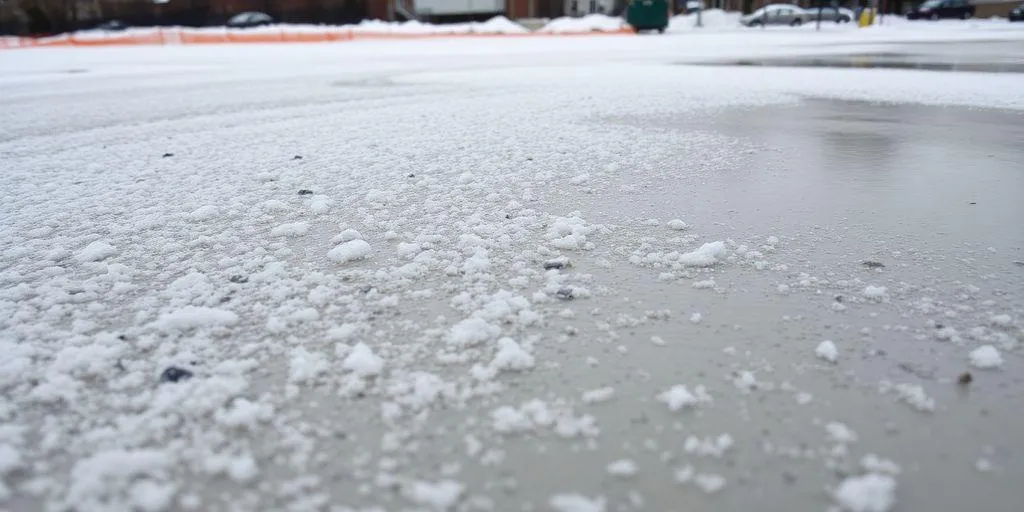Concrete Montréal
Essential Tips for Winter Concrete in Montreal: Ensuring Quality and Durability
Winter Concrete Montreal: Tips for quality and durable concrete during harsh winters. Ensure longevity with care.
Winter in Montreal can be brutal, especially on concrete surfaces. The constant freeze-thaw cycles, combined with snow and ice, can wreak havoc if you're not prepared. But don't worry, with a little know-how, you can keep your concrete looking great all winter long. This guide will walk you through some simple steps to protect your concrete from the harsh Montreal winter.
Key Takeaways
. Understand the impact of Montreal's harsh winter on concrete and take steps to prepare before the first snowfall.
. Use the right tools and products to maintain your concrete, such as plastic shovels and safe de-icing agents.
. Regular inspections and prompt repairs can prevent minor issues from becoming major problems.
Understanding the Challenges of Winter Concrete in Montreal

The Impact of Freeze-Thaw Cycles on Concrete
Living in Montreal, we know how brutal the winters can be. One major headache for concrete surfaces is the freeze-thaw cycle. As temperatures dip, any water that has seeped into the concrete freezes and expands. This expansion puts stress on the concrete, causing it to crack over time. Repeated freeze-thaw cycles can significantly weaken concrete, leading to serious damage if not addressed. It’s not just about the cracks you see; it’s about the unseen weakening that occurs beneath the surface.
Common Winter Threats to Concrete Surfaces
Winter throws a bunch of challenges at our concrete surfaces. Besides the freeze-thaw cycle, there’s the issue of de-icing chemicals. While they’re great for melting ice, products like rock salt can be harsh on concrete. They can cause scaling and pitting, making the surface look worn and reducing its strength. Plus, the weight of snow and ice can add pressure, increasing the risk of cracking. Let’s not forget about the ice itself. When it forms on concrete, it can make surfaces slippery and dangerous.
The Role of Proper Drainage in Winter Concrete Preservation
Proper drainage is key to keeping concrete in good shape during winter. Without it, water pools on the surface, increasing the chances of it seeping into the concrete. Once inside, this water can freeze and cause damage. To prevent this, we need to ensure that water drains away from concrete surfaces efficiently. This might involve checking and cleaning gutters, making sure downspouts direct water away from walkways, and ensuring the landscape slopes away from concrete areas. Keeping drainage in check helps protect concrete from winter’s harsh grip.
Montreal winters are tough on concrete, but with a little foresight and care, we can minimize the damage. By understanding the unique challenges our climate presents, we can better prepare and protect our concrete surfaces.
Preparing Your Concrete for Montreal's Winter

Evaluating Your Concrete’s Current Condition
First things first, we need to check out the state of our concrete. This means taking a good look at driveways, patios, or any other concrete surfaces around the house. Spotting cracks or chips early can save us a lot of trouble down the road. If we find any small cracks, it's time to patch them up before the cold really sets in. The freeze-thaw cycle in winter can make these small issues turn into big headaches. Using a concrete crack sealant is a smart move here.
Gathering Necessary Supplies for Maintenance
Once we've checked the condition of our concrete, it's time to gather supplies. Having the right tools on hand makes the whole process smoother. Here's a list of what we should have ready:
. Concrete Sealer: A high-quality sealer is crucial. It helps keep water out, which can prevent freeze-thaw damage. We should apply it before the first snow hits.
. Plastic Shovel: When clearing snow, a plastic shovel is kinder to the concrete than a metal one.
. Ice Melt Product: Choose an ice melt that's safe for concrete and the environment. Avoid rock salt, as it can be harsh on concrete surfaces.
Applying the Right Sealant for Winter Protection
Sealing our concrete is like giving it a winter coat. A good sealant will keep moisture from seeping in and causing damage when it freezes. To apply, we need to make sure the surface is clean and dry. Then, we can roll or brush the sealant on, following the product instructions closely. This step is best done on a clear day when the temperature is above freezing.
Preparing our concrete for winter isn't just about avoiding damage—it's about keeping our outdoor spaces looking their best through the cold months. A little effort now can make a big difference when spring rolls around.
Effective Maintenance Practices for Winter Concrete
Proper Shoveling Techniques to Avoid Surface Damage
When it comes to shoveling snow off your concrete, technique is everything. Using the wrong shovel can scratch or chip your surface, so opt for a plastic or rubber-edged shovel. Here’s a simple list to help:
. Choose a shovel with a non-metal edge.
. Shovel early and often to prevent ice buildup.
. Push snow instead of lifting to avoid strain and surface damage
Choosing and Applying Safe De-Icing Products
De-icing is a necessary evil in winter, but not all products are concrete-friendly. Avoid rock salt, which can be harsh on concrete. Instead, look for products labeled safe for concrete. Here’s what to consider:
. Calcium chloride is less damaging than traditional salt.
. Apply sparingly to prevent chemical build-up.
. Always read labels to ensure compatibility with concrete surfaces.
How to Ensure Effective Snow and Ice Removal
Removing snow and ice promptly is key to protecting your concrete. Here’s how we keep our surfaces clear:
. Start with a broom to clear light snow.
. Use a snow blower for heavier accumulations.
. Apply a thin layer of sand for traction, if needed.
Winter can be tough on concrete, but with the right tools and techniques, we can keep our surfaces in great shape. Remember, prevention is always easier than repair.
Preventative Measures for Long-Lasting Winter Concrete

Sealing and Protecting Your Concrete from Winter Weather
Alright, let’s talk about sealing. Sealing your concrete is like giving it a winter coat. It keeps the nasty stuff out—water, salt, and those harsh ice melts that can wreck your surfaces. A good sealant acts as a barrier, protecting against freeze-thaw cycles that can lead to cracks and scaling. Before you slap on a sealant, make sure the concrete's clean and dry. If there’s old sealant, get rid of it first.
Repairing and Preventing Cracks Caused by Freezing Temperatures
Catch those cracks early! Small cracks can turn into big, expensive problems if you ignore them. The freeze-thaw cycle is a real pain, and it can make these cracks worse. Here’s what we do:
1. Inspect your surfaces regularly.
2. Use a concrete filler or sealant to repair small cracks.
3. Keep an eye on them throughout the winter.
Avoiding Common Mistakes in Winter Concrete Maintenance
We’ve all been there—thinking we’re helping but actually making things worse. Here are some common mistakes to dodge:
. Using metal shovels that scratch up the surface.
. Applying too much de-icer, especially the harsh stuff.
. Ignoring drainage issues that lead to water pooling.
Let's not forget, a little attention now can save a lot of headaches later. By taking these preventative steps, we're not just maintaining our concrete; we're making sure it lasts through many winters to come.
